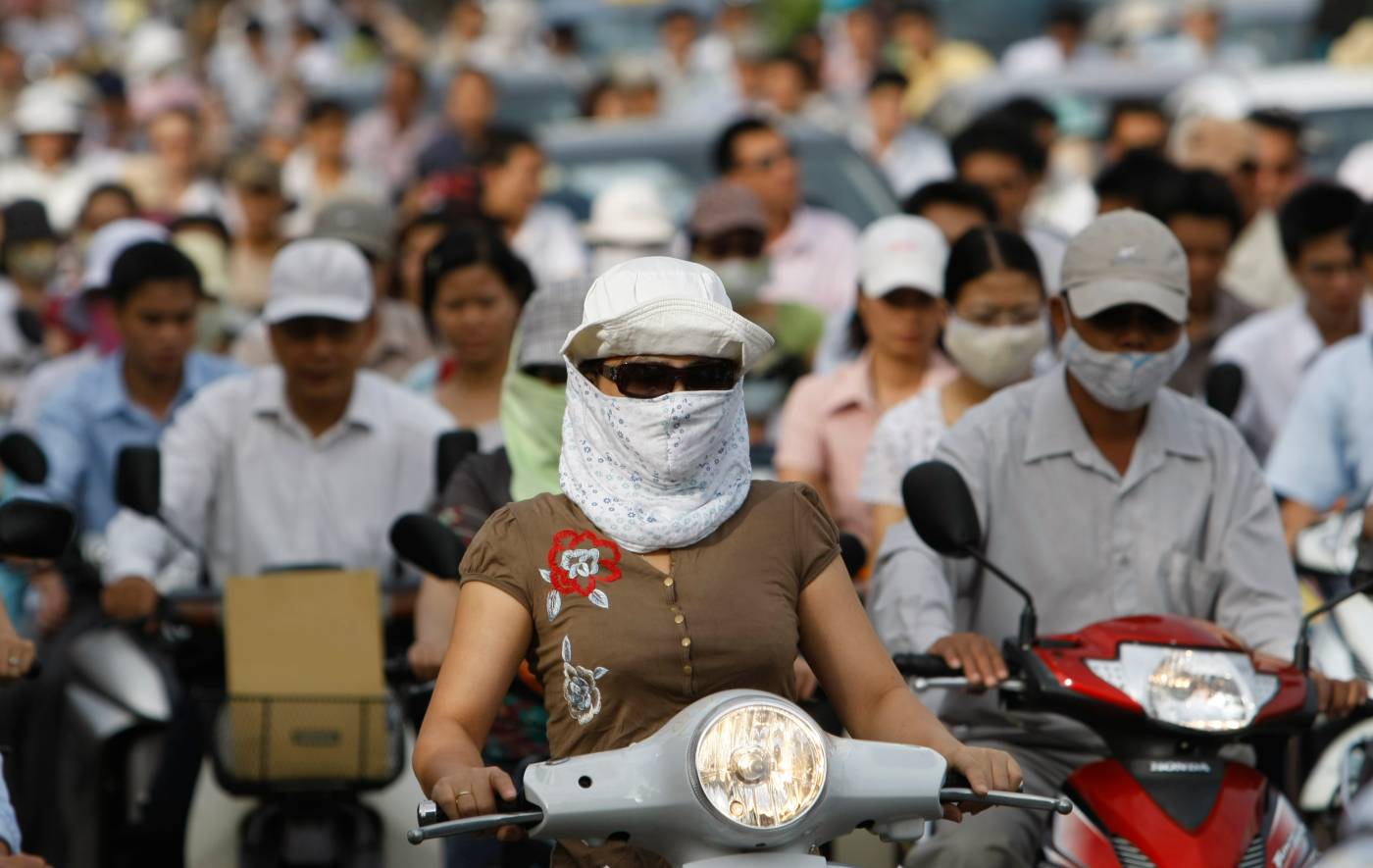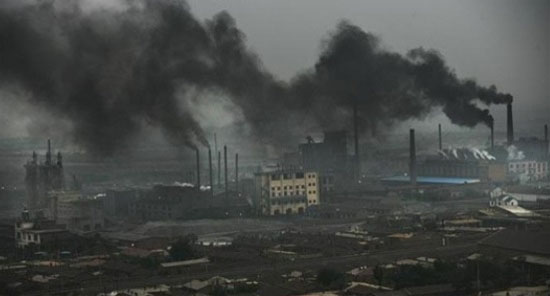
| Author :
 Though there has been no human casualty, the flooding has inundated vast areas of farmlands and sunk or washed away many fishing boats.
Though there has been no human casualty, the flooding has inundated vast areas of farmlands and sunk or washed away many fishing boats.
It has to come to light that Chinese authorities only informed Vietnam about abnormal flows in the river instead of giving prior notice about the discharge.
Thanh Nien News was among many media outlets to mistakenly report earlier that China had informed Vietnam in advance about heavy discharge from its dams.
The incident has raised concerns about possible disasters in Vietnam due to discharge by Chinese dams without advance information.
Nguyen Lan Chau, former deputy director of the National Center for Hydro-meteorological Forecasting, said relevant Vietnamese and Chinese agencies had signed an agreement in 2001 on sharing hydrological information.
Accordingly, China will share flow statistics on the Da and Red rivers twice a day from June to mid-October every year, and Vietnam will share that of the Ky Cung River in Lang Son.
But the agreement does not refer to sharing information about dam discharges, she said.
“The government needs to negotiate with China on sharing information about reservoirs’ operations.”
Why abnormal flow?
Many hydrologists are certain that the current flooding in the Red River has been caused by huge discharge of water in some hydropower dams in China and not because of heavy rainfall.
Luu Minh Hai, director of the Lao Cai Center for Hydro-meteorological Forecasting, said that based on routine hydrology data provided by China’s Yunnan Province.
“On October 11 the statistics showed abnormally high flows. Assuming they had discharged water, we issued an immediate warning to areas likely to be affected.
“They did not say directly that they were discharging water.”
Dang Thanh Mai, deputy director of the National Center for Hydro-meteorological Forecasting, also said her agency only received information about the river’s flow.
Upstream threats
Dao Trong Tu, advisor to the Vietnam River Network, said the recent incident is a lesson for Vietnam in exchanging information with China.
“Like the Mekong, the Red River flows through many countries with 49 percent in China. Any intervention in the upstream could affect countries downstream.”
Tu said China has two huge dams on the Red River, the 80-meter Namsa and 105-meter Madusan, besides 20 smaller ones.
“Vietnam needs to facilitate cooperation with China for better preparation to cope with natural disasters.”
Le Anh Tuan, deputy director of the Can Tho-based Research Institute for Climate Change, said experts have for long warned that China’s discharge of water could affect downstream areas in Vietnam.
Similar threats are predicted on the Mekong River, which flows through Myanmar, China, Thailand, Laos, Cambodia, and Vietnam, where many dams are being planned, he said.
“A discharge by a dam will have a domino effect on the whole system, which can cause huge damages.
“If we remain silent when more hydropower dams are being built on the Mekong River, it will be too late to speak out about damages we suffer.”
Reference: http://www.thanhniennews.com/society/vietnam-wakes-up-to-disaster-possibilities-after-china-discharges-water-in-river-52433.html
The National Center for Hydro-meteorological Forecasting has reported unusual flooding in the Red River in northern Vietnam since October 11 following heavy inflows from China, where massive volumes of water have allegedly been discharged from dams.
 Though there has been no human casualty, the flooding has inundated vast areas of farmlands and sunk or washed away many fishing boats.
Though there has been no human casualty, the flooding has inundated vast areas of farmlands and sunk or washed away many fishing boats.It has to come to light that Chinese authorities only informed Vietnam about abnormal flows in the river instead of giving prior notice about the discharge.
Thanh Nien News was among many media outlets to mistakenly report earlier that China had informed Vietnam in advance about heavy discharge from its dams.
The incident has raised concerns about possible disasters in Vietnam due to discharge by Chinese dams without advance information.
Nguyen Lan Chau, former deputy director of the National Center for Hydro-meteorological Forecasting, said relevant Vietnamese and Chinese agencies had signed an agreement in 2001 on sharing hydrological information.
Accordingly, China will share flow statistics on the Da and Red rivers twice a day from June to mid-October every year, and Vietnam will share that of the Ky Cung River in Lang Son.
But the agreement does not refer to sharing information about dam discharges, she said.
“The government needs to negotiate with China on sharing information about reservoirs’ operations.”
Why abnormal flow?
Many hydrologists are certain that the current flooding in the Red River has been caused by huge discharge of water in some hydropower dams in China and not because of heavy rainfall.
Luu Minh Hai, director of the Lao Cai Center for Hydro-meteorological Forecasting, said that based on routine hydrology data provided by China’s Yunnan Province.
“On October 11 the statistics showed abnormally high flows. Assuming they had discharged water, we issued an immediate warning to areas likely to be affected.
“They did not say directly that they were discharging water.”
Dang Thanh Mai, deputy director of the National Center for Hydro-meteorological Forecasting, also said her agency only received information about the river’s flow.
Upstream threats
Dao Trong Tu, advisor to the Vietnam River Network, said the recent incident is a lesson for Vietnam in exchanging information with China.
“Like the Mekong, the Red River flows through many countries with 49 percent in China. Any intervention in the upstream could affect countries downstream.”
Tu said China has two huge dams on the Red River, the 80-meter Namsa and 105-meter Madusan, besides 20 smaller ones.
“Vietnam needs to facilitate cooperation with China for better preparation to cope with natural disasters.”
Le Anh Tuan, deputy director of the Can Tho-based Research Institute for Climate Change, said experts have for long warned that China’s discharge of water could affect downstream areas in Vietnam.
Similar threats are predicted on the Mekong River, which flows through Myanmar, China, Thailand, Laos, Cambodia, and Vietnam, where many dams are being planned, he said.
“A discharge by a dam will have a domino effect on the whole system, which can cause huge damages.
“If we remain silent when more hydropower dams are being built on the Mekong River, it will be too late to speak out about damages we suffer.”
Reference: http://www.thanhniennews.com/society/vietnam-wakes-up-to-disaster-possibilities-after-china-discharges-water-in-river-52433.html





.png)


